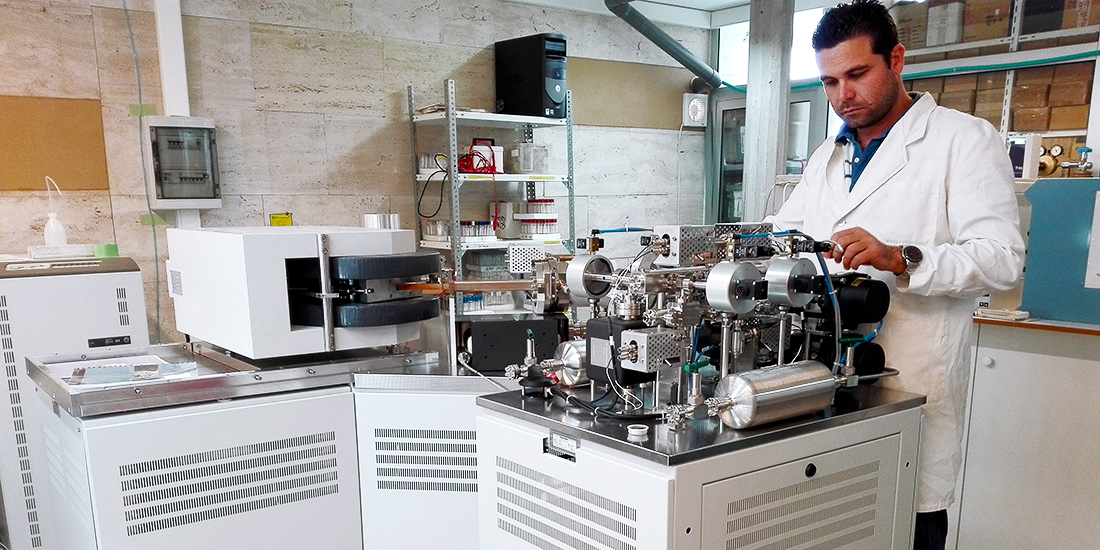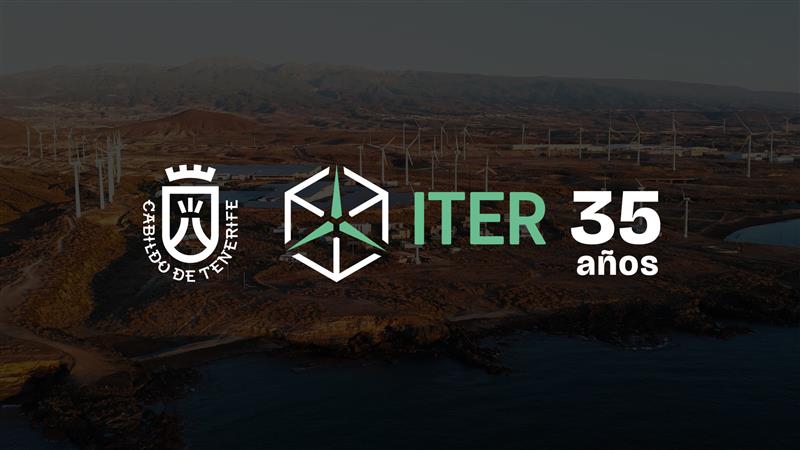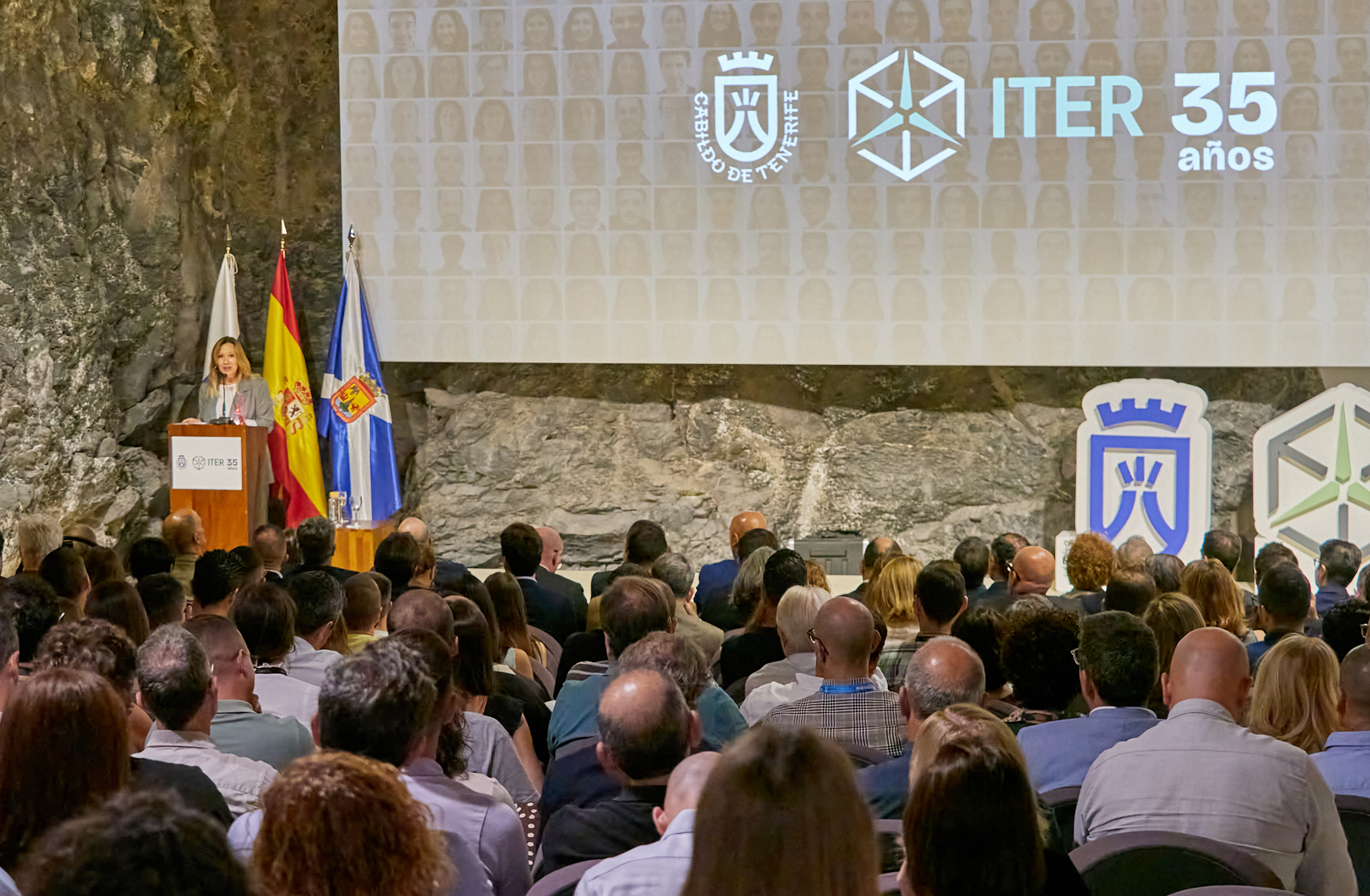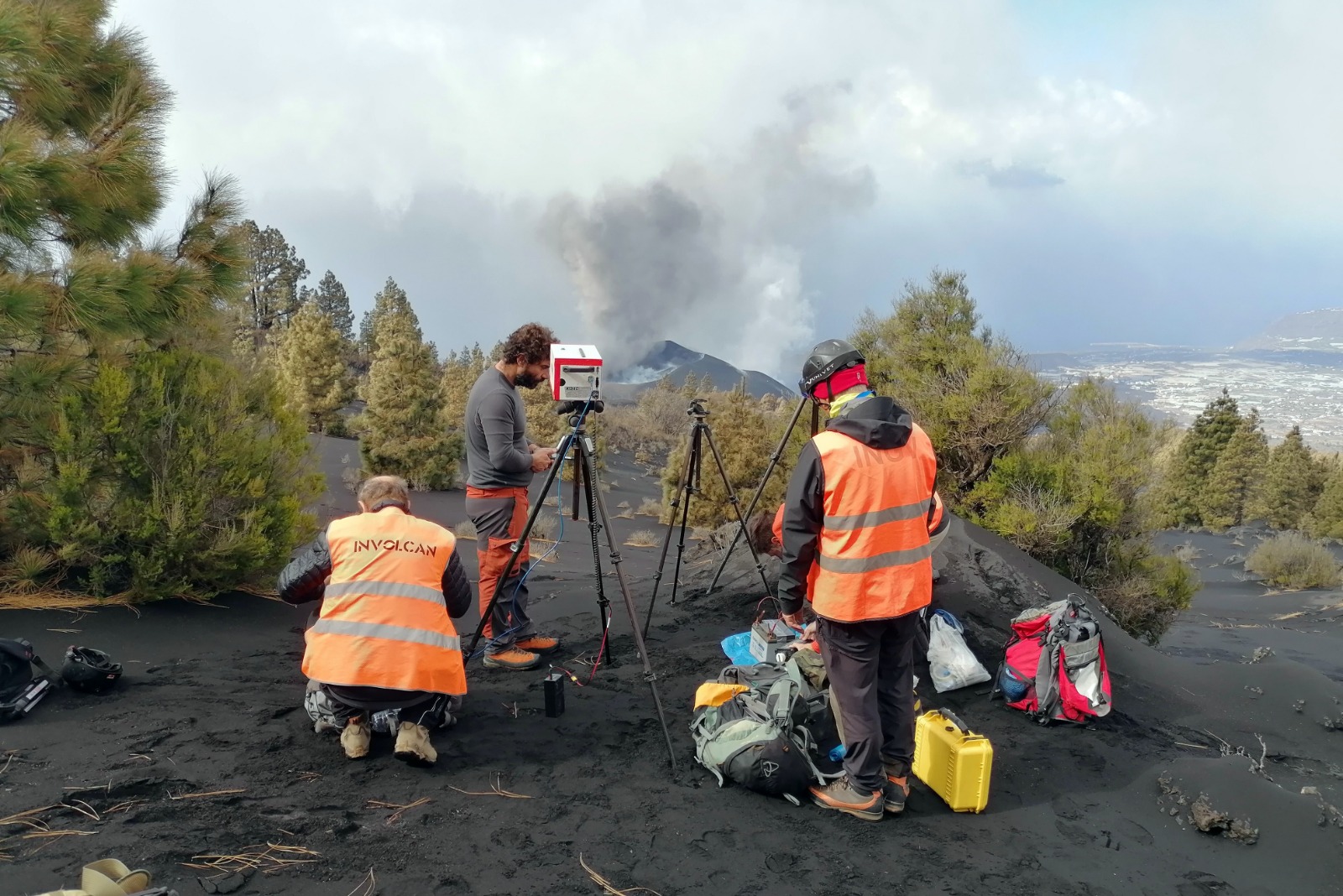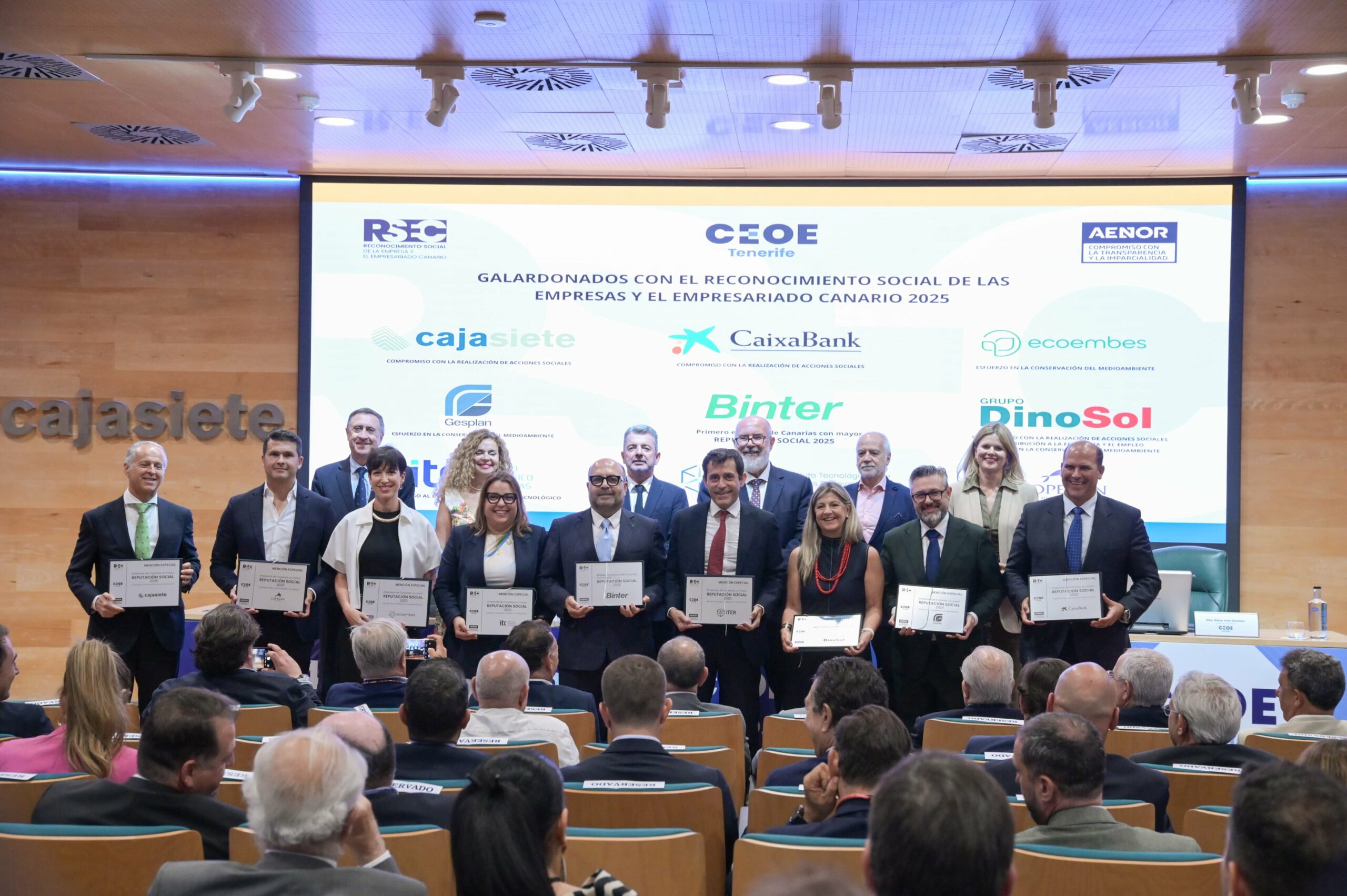Recientemente cuenta con nuevo espectrómetro de masas de isótopos estables de gases nobles (NGMS) co-financiado por el Plan Nacional de I+D+i 2013-2016.
El Instituto Tecnológico y de Energías Renovables (ITER), organismo dependiente del Cabildo Insular de Tenerife, fue el primer centro de I+D en Canarias en contar con un espectrómetro de masas sector magnético para la determinación de relaciones de isótopos estables, entre sus recursos técnicos instrumentales. En 2004 el ITER adquirió su primer espectrómetro de masas de relaciones isotópicas (en inglés IRMS, Isotope Ratio Mass Spectrometry) gracias al proyecto ALERTA (MAC/2.3/C56) “Reduciendo el riesgo sismo-volcánico en Azores y Canarias: desarrollo e implementación de un sistema de alerta para la protección civil basado en la detección de señales precursoras de erupciones volcánicas” co-financiado por el programa de la Unión Europea INTERREG III B 2000-2006 Azores-Madeira-Canarias.
Con este primer espectrómetro de masas se puso en marcha en el ITER el primer laboratorio de geoquímica de isótopos estables en Canarias cuya principal finalidad era principalmente la de caracterizar la fracción magmática de los gases volcánicos que emiten los sistemas volcánicos insulares. La instrumentación de este laboratorio consiste en un espectrómetro de masas de sector magnético Thermo Finnigan MAT253 y un conjunto de instrumentación periférica necesaria para la preparación de las muestras antes de su introducción en el espectrómetro de masas. Este conjunto de periféricos constan de un cromatógrafo de gases con sistema de combustión, un analizador elemental con un sistema de dilución y un sistema universal de preparación e introducción de muestras gaseosas (GasBench II). Esta instrumentación nos permite realizar análisis de isótopos estables de hidrógeno, oxígeno, carbono y nitrógeno
Recientemente este laboratorio de geoquímica de isótopos estables cuenta con un segundo espectrómetro de masas para la determinación de relaciones de isótopos estables de gases nobles (en inglés NGMS, Noble Gas Mass Spectrometry) que ha sido adquirido gracias a un proyecto (AIDL13-3E-2476) de la Agencia Insular de la Energía de Tenerife (AIET), aprobado por la convocatoria del subprograma estatal de infraestructuras científicas y técnicas del Plan Estatal de I+D+i 2013-2016 del Ministerio de Economía y Competitividad, co-financiado con fondos FEDER de la Unión Europea. Los estudios de geoquímica de isótopos estables de gases nobles tienen una multitud de aplicaciones científicas. El equipamiento científico recientemente adquirido proporcionará un avance significativo en los trabajos de investigación que científicos del ITER realizan en el campo de la exploración de recursos geotérmicos, los recursos hídricos subterráneos y la reducción del riesgo volcánico a través de un fortalecimiento del programa geoquímico para la vigilancia volcánica, entre otros.
Un claro ejemplo sobre la importancia del uso y la aplicación de la geoquímica de isótopos estables de gases nobles en el campo de la reducción del riesgo volcánico se puede comprender con la reciente erupción del volcán Mt Ontake (Japón) ocurrida el 27 de septiembre de 2014. Este evento geológico fue una erupción hidro-volcánica, en la cual no se detectó nuevo material magmático, que causó la muerte de 57 personas y 6 desaparecidos. La erupción no registró señales precursoras tales como cambios significativos en la sismicidad y la deformación del edificio volcánico; por el contrario, los investigadores de la Universidad de Tokio registraron un aumento significativo de las relaciones de isótopos estables de helio (3He/4He) en los fluidos terrestres del volcán Mt Ontake (gases y aguas) de junio de 2003 a noviembre de 2014; durante un período de 10 años antes de la erupción 2014 del volcán Mt Ontake (Japón)! Este descubrimiento sugiere que el registro de esta anomalía en las relaciones de isótopos estables de helio (3He/4He) puede ser un marcador muy útil para la mitigación del riesgo a largo plazo en relación con la erupción volcánica.
Este laboratorio de geoquímica de isótopos estables no sólo tiene importancia para la vigilancia volcánica en Canarias, dado que el análisis y la evaluación de los isótopos estables es una herramienta que se utiliza ampliamente en los estudios relacionados con la exploración y el desarrollo de la geotermia.
Se denomina “isótopos” a las diversas formas de un elemento químico que se diferencian en el número de neutrones de su núcleo y, por tanto, en su masa atómica. Es común asociar el término “isótopo” a los nucleidos radiactivos. Sin embargo los isótopos estables, los que no se descomponen con el tiempo, son los más abundantes en la naturaleza. Su empleo como herramienta analítica resolutiva se esta extendiendo a numerosos campos científico-técnicos como la biología, ecología, agronomía veterinaria y producción animal, hidrogeología, mineralogía y petrología, paleoclimatología, arqueología, medioambiente, calidad alimentaria, cambio climático, geoquímica, etc.


